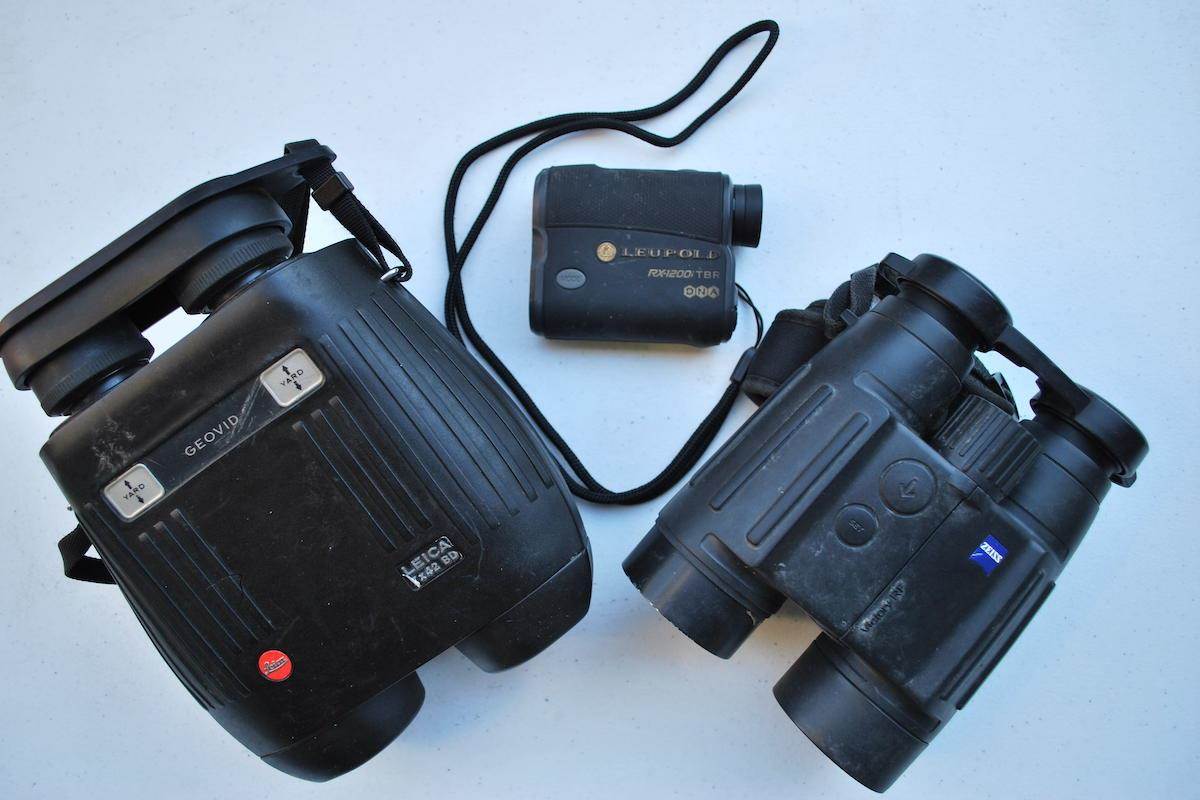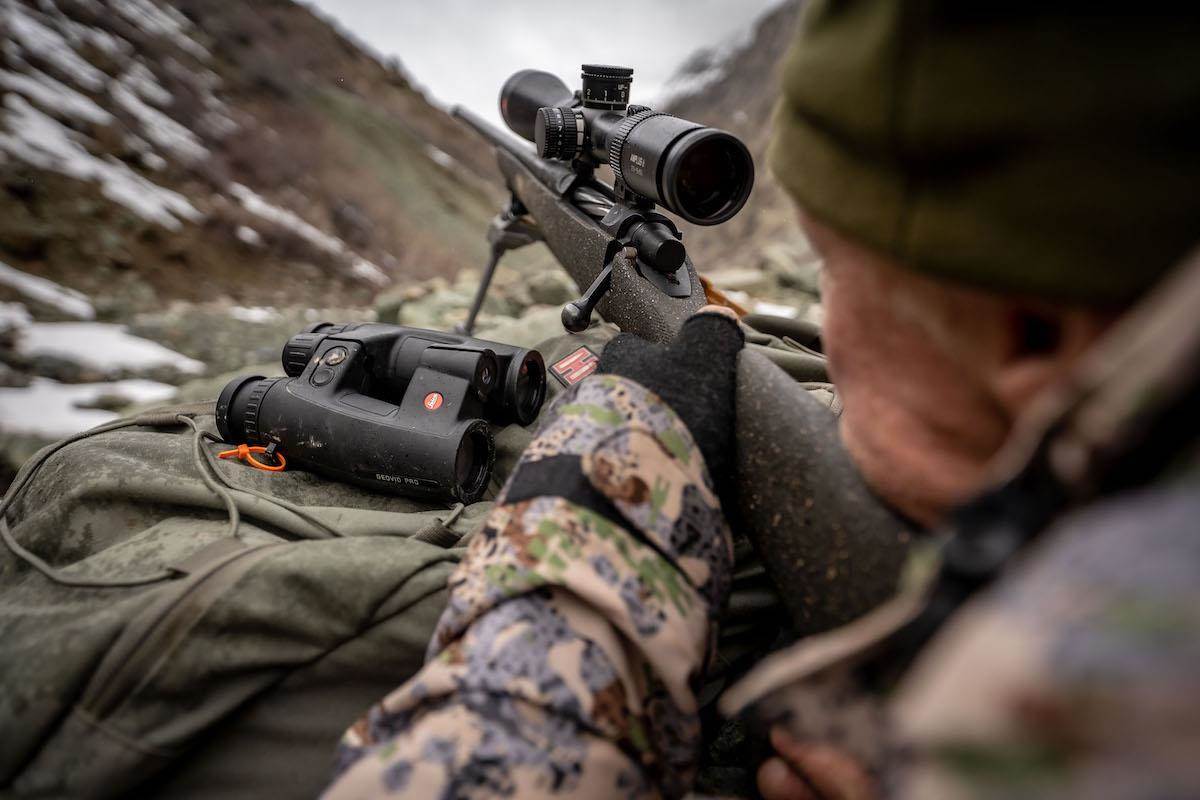
There’s no question about the handiness of having both rangefinder and binocular in one tool: Judge the animal, read the distance, and get on the rifle. Boddington is about to hammer an ibex in Tajikistan. (Photo by Craig Boddington)
A good binocular is the most critical basic hunting tool. More than in guns, there are reasons why one binocular costs $500, and another binocular of the same magnification costs four times more. Mind you, there is a lot of very good medium-priced glass. As you get into the rarified air of the best premium brands, the differences become harder to see. However, in light transmission and edge-to-edge clarity, the differences are there. But, realistically, depending on your needs, you may not readily see the difference. There’s a lot of really good medium-priced glass that, honestly, will do the job for most of us, under most circumstances.
We all have budgets, and life is full of compromises. Glassing knows no closed season, so the binocular is a tool that can be used to enjoy wildlife year-‘round. Most rifles shoot better than the people who own them. However, you can’t utilize that accuracy unless you can see what you’re shooting at. So, when compromises are needed, spring for a cheaper rifle and put a better riflescope on it. Then go a step farther: Get a medium-quality riflescope, and invest in the best-quality binocular you can afford.
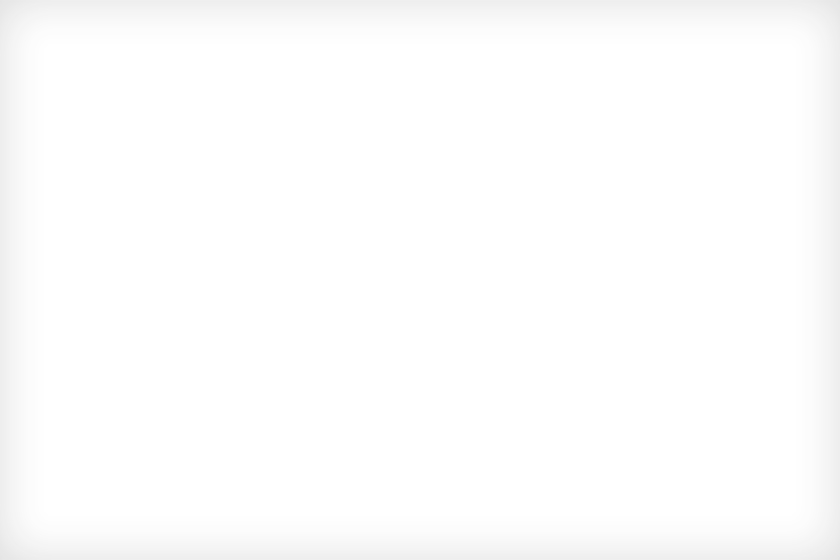
It’s not just that you’ll use the binocular more. Good binoculars gather more light than any riflescope. When the light is going fast and a buck walks out, you can see the rack clearly through a quality binocular, count the points, and make a decision. It’s not necessary to count points through your riflescope. Make that decision through the binocular and reach for the rifle.
All you need to see is enough of the shoulder to place the shot. It doesn’t take the brightest scope, and in most places, not even the most accurate rifle. It’s the binocular that makes the call, so get the best you can afford.
Sport optics are a large field, dozens of brands. Nobody knows them all, and this story will not compare one brand to another. I’m not certain there are any real bargains but, again, there’s a lot of excellent medium-priced glass. Short of all-day glassing in sheep mountains, or counting antler points at last light, good medium glass will do what most of us need done. Instead of delving into the ethereal worlds of quality and price, let’s talk about power and configuration.
MAGNIFICATION AND LIGHT
As in riflescopes, binoculars are rated primarily by two numbers: Magnification and size of objective lens (as in 8x32mm or 10x50mm). Magnification is the size of the image. Divide magnification into size of objective lens to derive the exit pupil, an index of the binocular’s light-gathering potential. If quality is equal, an 8x32mm bino with 4mm exit pupil cannot be as bright as a 10×50 with 5mm exit pupil. Quality of glass and coatings matter, so a premium 8x32mm binocular may well be visually brighter than a 10×50 of inferior quality.
- RELATED: The Right Way — Some Wrong Ways, Too — to Glass for Big Game
The most useful hunting binoculars are probably 7X, 8X, or 10X. I have owned 12X and 15X binoculars, and one of the greatest big-country hunting tools ever is the big Zeiss 20x60mm. However, few people are steady enough to hand-hold a binocular above 10X. I never could. For most of us, binoculars above 10X need to be tripod-mounted.
So, bigger isn’t necessarily better, but it depends on what you’re doing. A clear 10X binocular can be tripod-mounted, making a great tool for glassing big country, but now you must carry tripod and adapter as well as binocular. Since I’m mostly a Western hunter, I’m pretty much a 10X binocular guy. I’m used to that image size and, from a steady position, I can hand-hold 10X and use it to good effect.
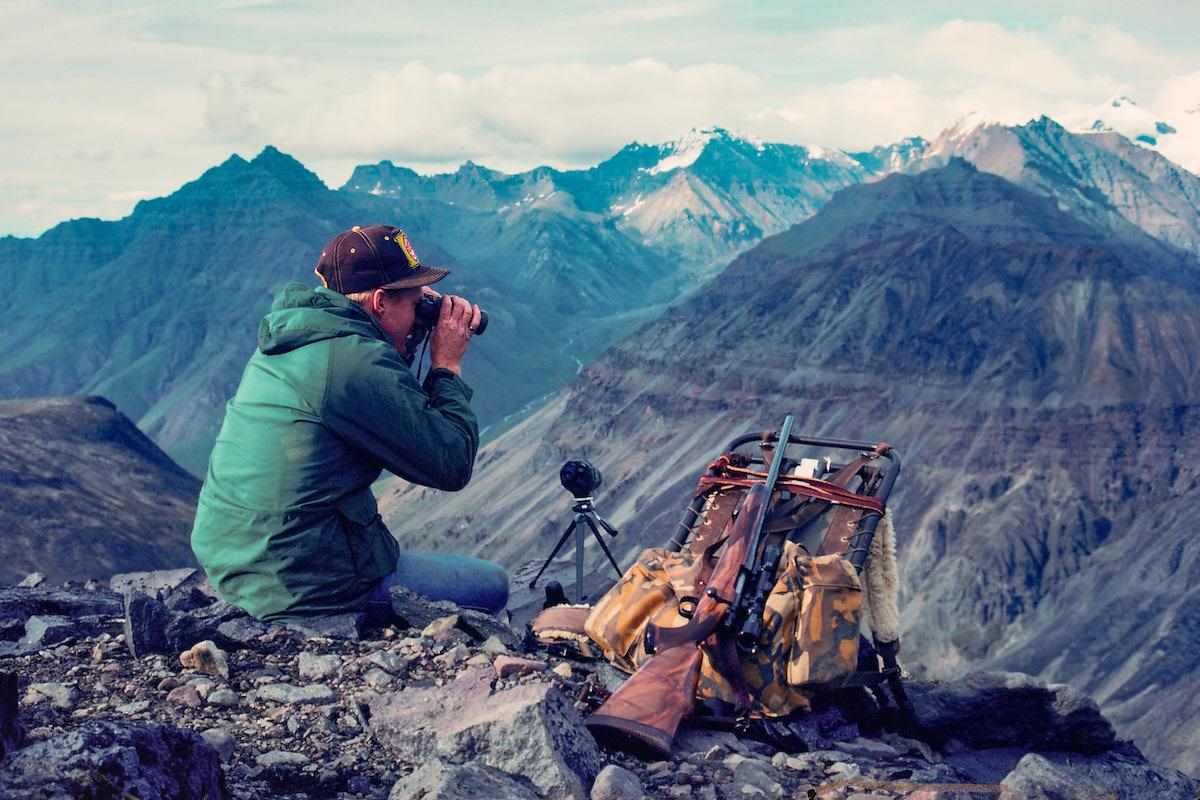
There is no magic in 10X; if you’re primarily a whitetail hunter, that may be more magnification than you need. Early in our ’22 Kansas rifle season, a good 10×42 binocular went south on me. In my gun safe, I had an old (but good) 7×42 binocular, plenty of power for any deer stand I have. I had forgotten that this was once my “go-to” binocular. Using it, I remembered why.
Today, 8X is the most common alternative to 10X. Again, I’ve gotten used to 10X. Binocular size is largely dictated by the objective. So, an 8×32 will be much the same size as a 10x32mm. Again, all things being equal, the 8×32 will be brighter at first and last light than the 10×32. These smaller-objective binos are not as bright—but more compact—than 8x42s and 10x42s. It doesn’t matter much to me, but it matters to hunters of smaller stature, and to women, who don’t appreciate huge binoculars banging on their bodies.
- RELATED: New Scopes, Binos and Rangefinders from SHOT 2024
The best magnification depends on the hunting you do most. Because I’m long accustomed to a 10X bino, I’ve never found that too much. However, 7X or 8X is plenty for most whitetail hunting. Either are also adequate for much Western hunting, but in really big country, 10X rules.

MINI OR MIDI?
Quality of lenses, coatings, and construction are most important. To me, miniature “opera” binoculars are fairly useless for most hunting. Good brands can be bright and clear but, just like an ultralight rifle is hard to stabilize, I find the smallest binos difficult to use. I have a Swarovski 8×20, great little glass. They fold into a shirt pocket, so are useful in turkey hunting, when festooned with calls. I’ve also taken them on forest safaris, cover so thick that any binocular is of limited utility. For brightness, a 7×42 or 10×50, with maximum exit pupil, is hard to beat. However, the extra-large objective makes for a bulkier binocular. So, for general utility, I’m happiest with the “standard” 10×40 or 10×42. If I were being weight (and bulk) conscious, 8x32s or 10x32s are lighter and smaller, but cannot be as bright.
ROOF OR PORRO?
Binoculars use our two-eye “binocular vision,” creating less eyestrain than a monocular or spotting scope. The objective lenses “gather” (more accurately, admit or “manage”) light. The ocular lenses magnify the image, which comes in upside down and is reversed for viewing by prisms.
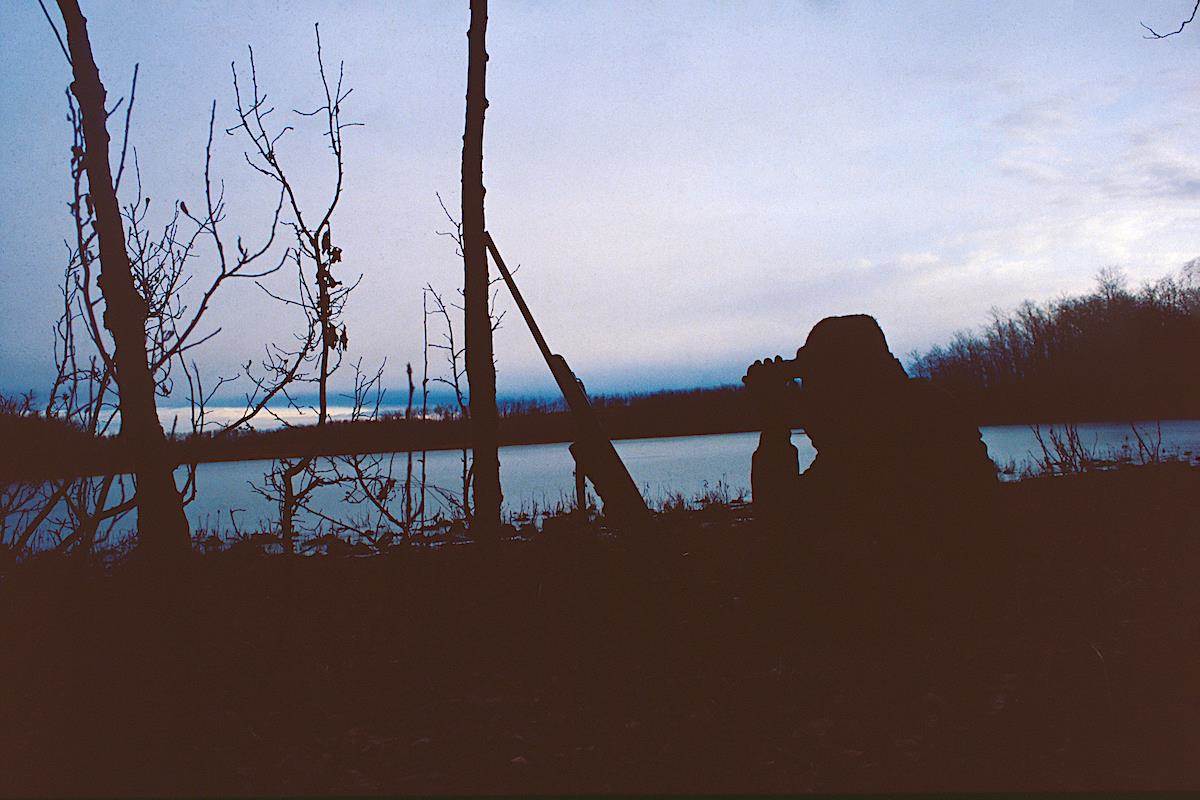
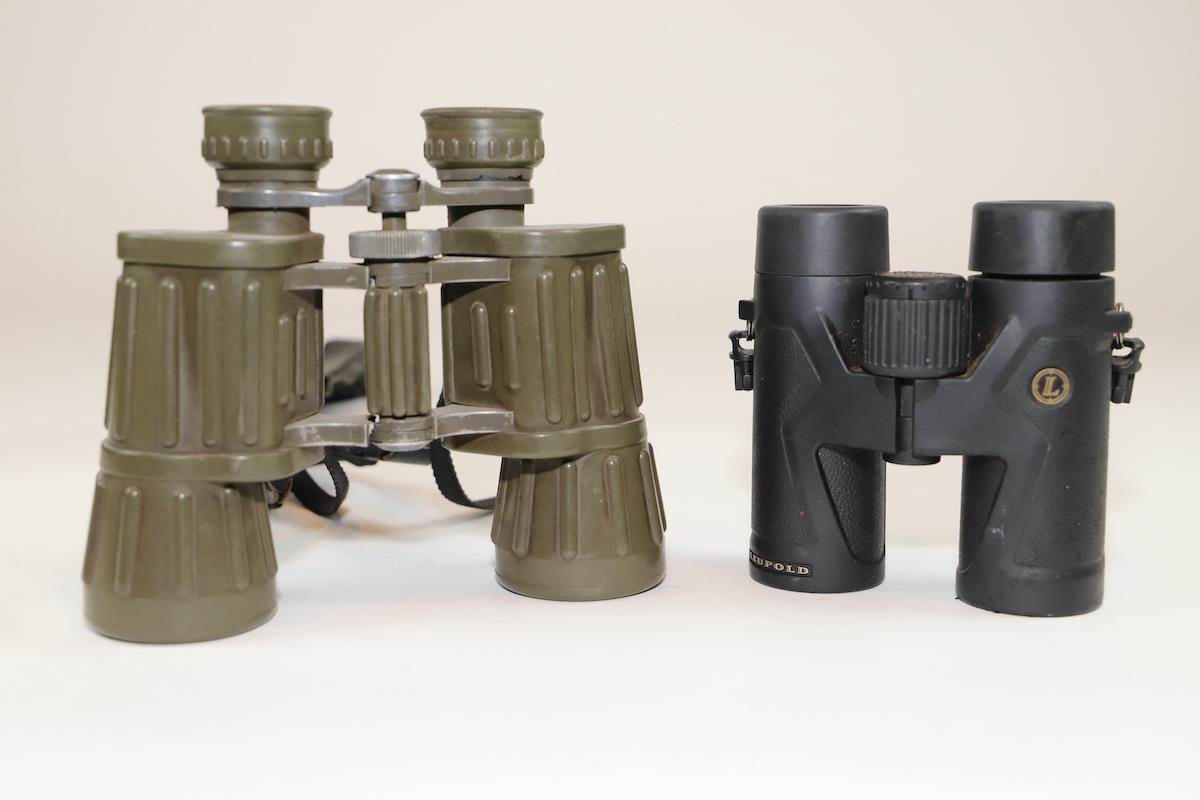
The two systems are Porro prism, placed horizontally, the “dogleg-shaped” binocular; and roof prism, with in-line prisms and straight barrels. Both have advantages. Porro prisms offers a wider field of view, and many find them easier to hold steady. The roof prism is more difficult to manufacture, so usually more expensive. It is easier to seal the one-piece roof prism barrel for waterproofing. The roof prism binocular is more compact, and considered more rugged, with the straight barrels somewhat less likely to be knocked out of alignment.
Today, most “better” binoculars, from medium to premium, are roof prism. It’s more about quality—if that is equal, there are no strong arguments between roof and Porro.
RANGEFINDER BINOS?
Last year, I hunted black bear over bait in Alberta, all stands 20 yards from the bait (for bow or gun). I had a good rangefinding binocular, but didn’t need either tool. This is unusual. I (ill)always carry a binocular and, usually, employ it constantly. In open country, I (ill)always have a laser rangefinder. I use it a lot, too. I play the guessing game: guess the distance, then check it. Over time, guesses become more accurate. This is valuable, because there are circumstances (such as fog or precipitation) where no rangefinder can work.
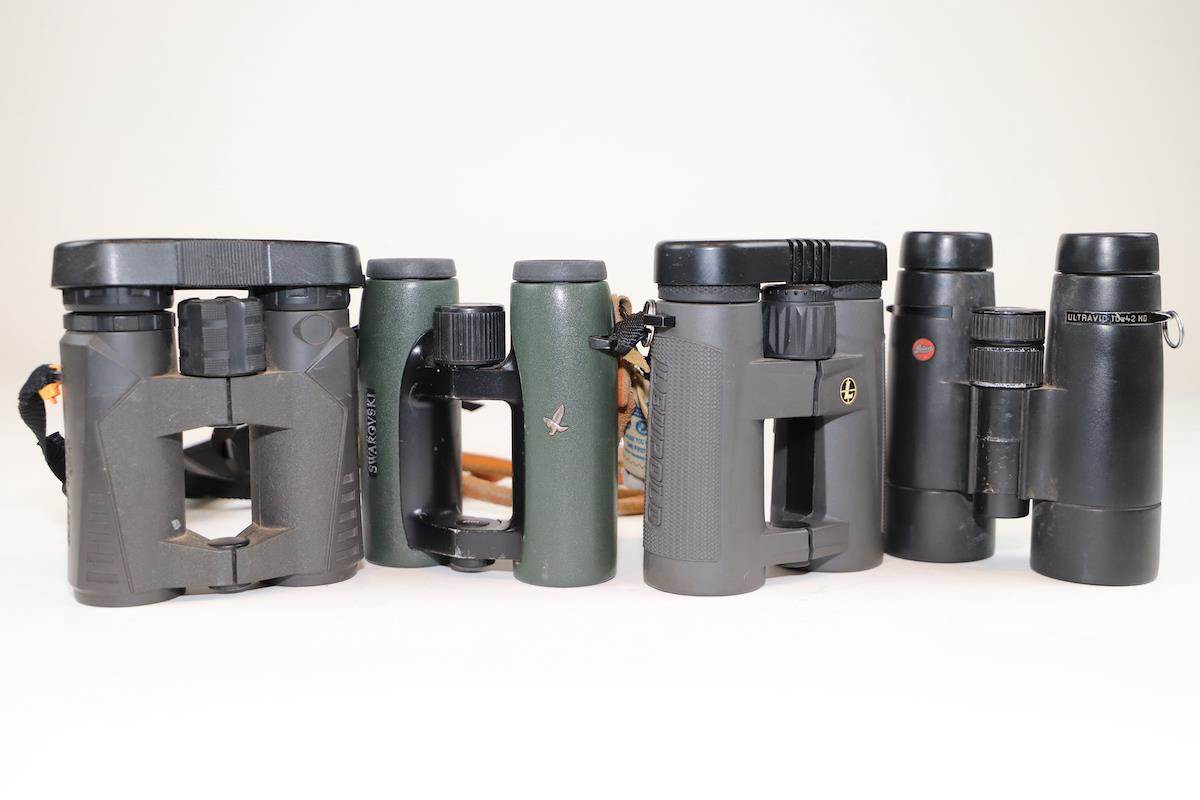
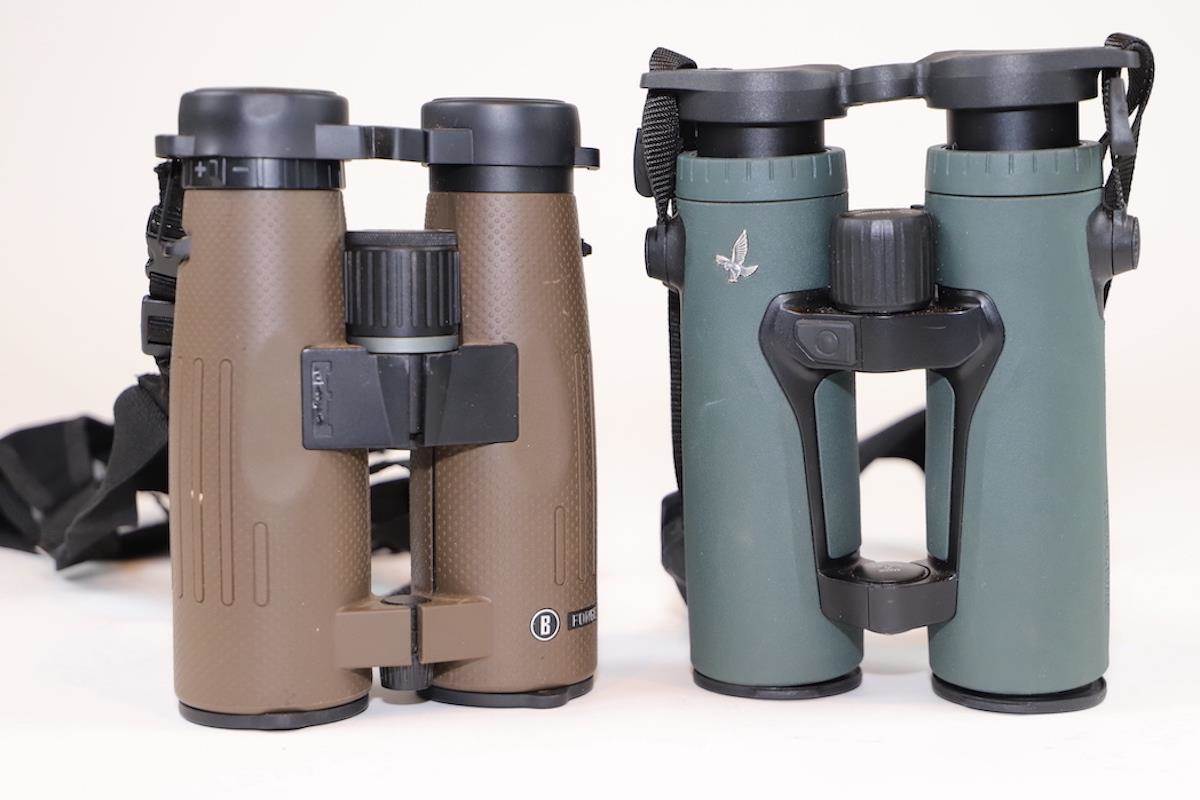
It’s wonderfully handy to have both tools in one device. There are drawbacks. Rangefinding binoculars are heavier and bulkier, although less weight and bulk than carrying both binocular and separate rangefinder. Also, sharing the lenses with the laser causes some optical degradation. With the top brands, this is almost invisible, but it’s unavoidable.
- RELATED: 5 Overlooked Keys to Know Before Buying a Riflescope
The biggest problem is cost. Combined in one unit, both binocular and rangefinder need to be good, and top-quality units are expensive. In big, open country, rangefinding binoculars are wonderful. They save time, and can save shots: judge the animal, read the distance, and get on the rifle. However, today’s fast and accurate laser rangefinders are light, compact, and shockingly inexpensive for the technology they provide.
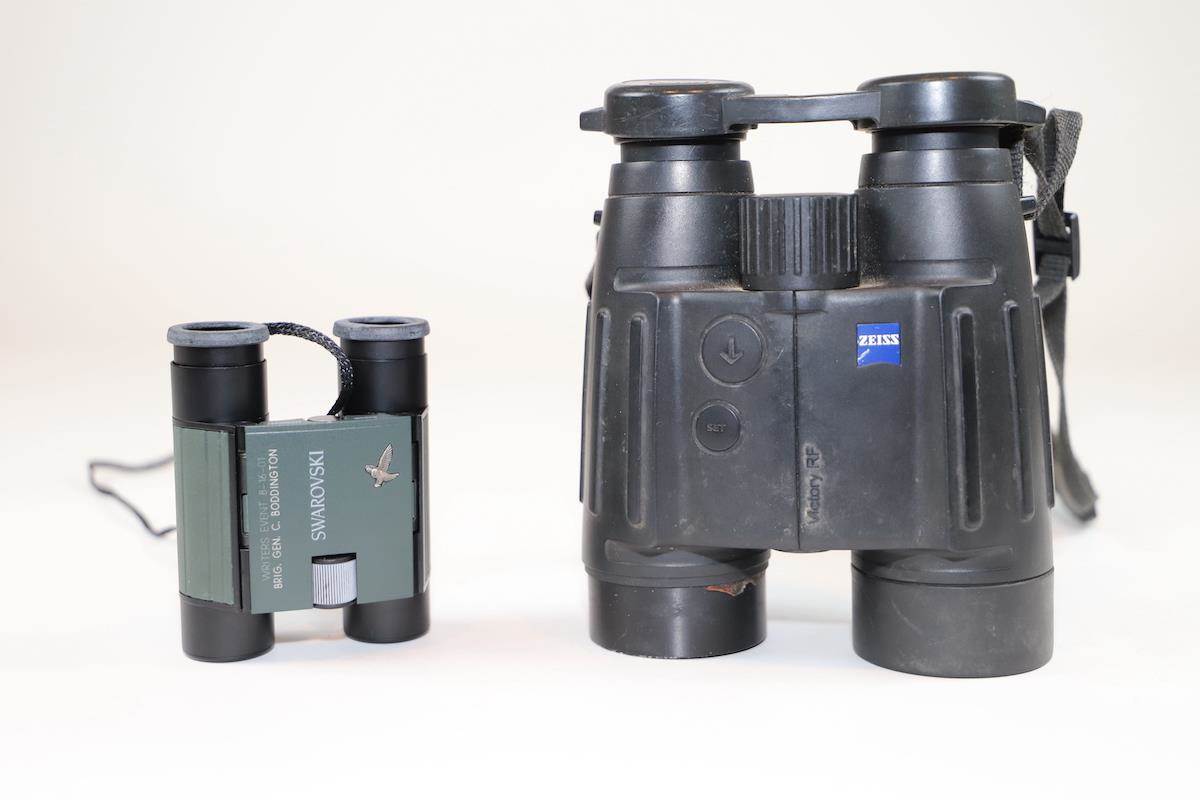
Leica introduced the first rangefinding binocular back in 1992, the 7×42 Geovid. Limited in magnification, it was bulky and heavy. I was doing a lot of mountain hunting back then—I found it so handy to have both rangefinder and binocular in one tool, I carried that boat anchor up many a mountain. Today’s rangefinding binoculars are lighter, more streamlined, and available in higher magnification. I use them and love them.
- RELATED: New for 2024—Leupold’s BX-4 Range HD Rangefinding Binocular
However, even today, I often carry a favorite binocular with a separate laser rangefinder. Not quite as handy, but either system works. So, to save money, and again: Buy the best binocular you can afford. Talk to your buddies, compare at good retail outlets, and always check out the factory warranty. You can budget in a compact laser rangefinder, or add one later. Always and forever, a good binocular is the most important basic hunting tool.
